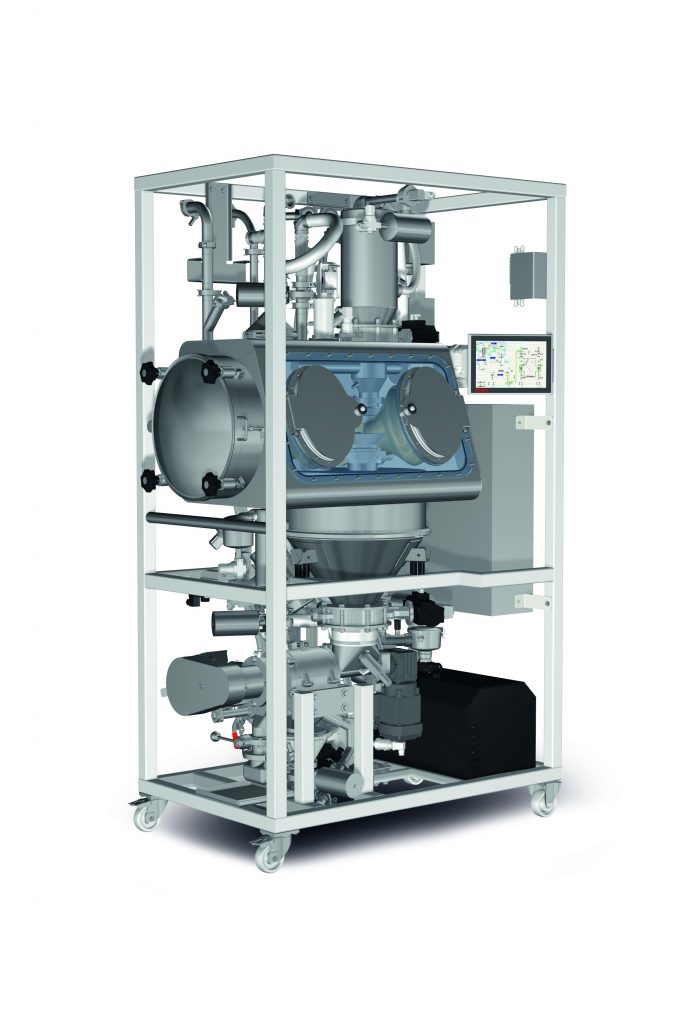
“We would like to contribute with our solutions to the professionalization of additive manufacturing”
Frankfurt, 15th April 2020 – For 70 years, AZO GmbH + Co.KG has specialised in the handling of bulk goods. Its highly automated conveying, screening and dosing technology is in demand, particularly in the food, pharmaceutical, chemical and plastics industries. In an interview, Development Manager Frank Pahl explains the advantages of professional powder handling, the expectations of the Osterburkenbased company in the young AM market and his ideas about AM process chains in 2030.
Could you please briefly introduce the AZO Group to us?
Frank Pahl: Gladly. We are a globally active, owner-managed group of companies with over 1,000 employees. Our head office is in Osterburken, where our founders Adolf and Marianne Zimmermann developed the forerunners of today’s eddy current sieve shaker for flour, which were in demand in mills and bakeries from 1949 onwards. Since then, we have developed into a leading specialist for the automated handling of raw materials of all kinds – from powdered milk, baby food or spices to chemicals, pharmaceuticals and plastics. The latest field of application is Additive Manufacturing (AM).
Which area of the AM process chain do you cover?
Pahl: Here, too, it is about automated powder handling. We offer solutions to feed the AM systems with fresh powder and to prepare powder not exposed in the construction process, to recycle it or to discharge it at the end of the process…

…short interposed question: Is it about the metal or the plastic sector?
Pahl: Both. What initially started with the demand for individual screening machines for metal and plastic powder quickly led to a development partnership with an AM plant manufacturer. This resulted in a complete system that includes processes in the periphery – i.e. material supply, screening, dosing and safe feeding into the printers. In addition, our solution collects the unprocessed powder in a buffer container, then screens it in an eddy current screening machine and returns it to the process with the aid of our pneumatic conveying technology.
Is this powder handling automated?
Pahl: Yes. We have built up the necessary know-how for the automated handling of powders including screening, dosing and measuring technology in the food, chemical and pharmaceutical industries over the last 70 years. We also master the task of combining new material and processed powder.
Can the unexposed powder be completely reused?
Pahl: In principle, this is possible, but it depends on the thermal history of the material, which proportion of the prepared material can be added to the “fresh powder”. It is desirable to continue using as much material as possible for several reasons. In addition to the economic advantages, resource conservation and ecological aspects are also important. Especially the fine plastic powders should be kept in closed cycles if possible.
How do you ensure consistent powder and process quality?
Pahl: Screening is central in order to remove splashes and lumpy material. In addition, metal powder is consistently fed in an inert gas atmosphere – which is guaranteed by appropriate airlocks. Our system solutions ensure that the powder does not come into contact with ambient oxygen. The applicable ATEX and health protection standards are also complied with.
Are there other advantages and added values for users of your systems?
Pahl: Professional powder handling ensures a reliable and fully automated material supply in the AM process. The environment also remains as far as possible dust-free thanks to proven filter technology, which is particularly important with regard to the integration of AM processes in an existing production environment. In addition, inert gas consumption is reduced thanks to the closed gas circuit required for handling metal powders.
What potential do you believe additive manufacturing has at AZO?
Pahl: Compared to our existing markets, it’s still at the beginning, but it’s certainly an interesting field of technology for the future. We assume that it will continue to develop – and would like to contribute to professionalization and industrial maturity with our solutions.
How do you envisage the typical AM process chain in 2030?
Pahl: Extensively automated and with tighter quality control than before. In our sector it will then certainly be possible to measure powder quality inline. This is because it will be necessary to analyse the powder conditions more precisely in order to optimise the mixing ratios of fresh and processed material. For this purpose, measuring methods for the analysis of the thermal pre-damage of the material will certainly establish themselves on the market.
Final question: What were your goals when you joined the VDMA’s Additive Manufacturing working group?
Pahl: We would like to contribute our accumulated experience in bulk material handling in other industries to the AM sector. The working group offers the opportunity to talk to relevant players and to share our know-how with them through targeted networking. After 70 years of practice in the now largely automated powder handling sector, we know that the wheel certainly does not need to be reinvented here.
About 150 companies and research institutes collaborate under the roof of the VDMA in the Additive Manufacturing Association. System manufacturers, suppliers of components and materials, industrial users from the metals and plastics sectors, services providers for software, manufacturing, and finishing as well as researchers all have a common goal: the industrialization of additive manufacturing technologies.